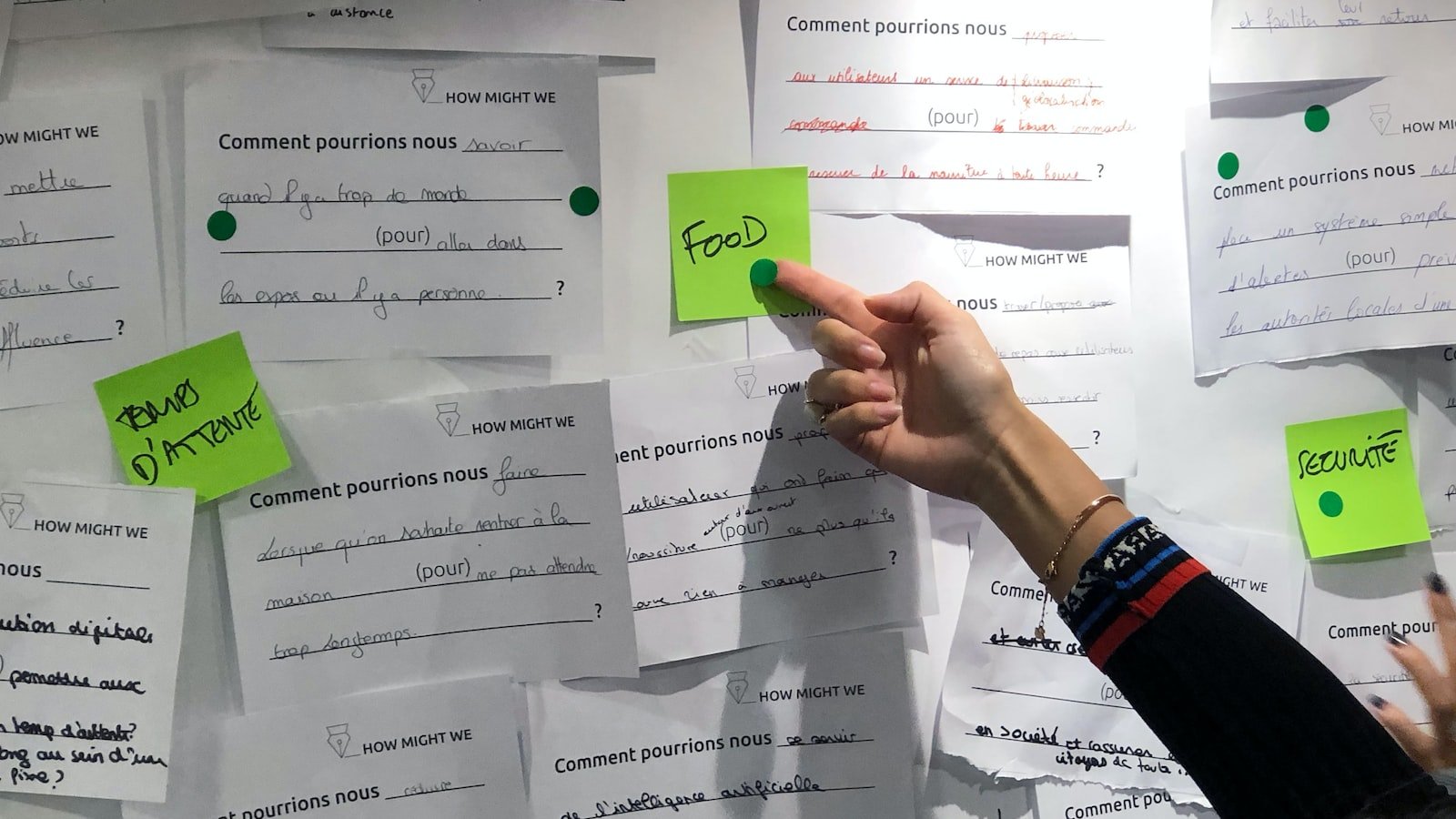Welcome to the captivating world of User Experience (UX) – where art meets science, and websites transform into virtual masterpieces that enthrall and engage visitors. In this digital age, where creating an electrifying online presence can make or break a business, understanding the intricacies of UX becomes paramount. This article delves into the mesmerizing realm of “.” As we embark on this journey, we will explore how the delicate dance between aesthetics, functionality, and user psychology can unlock the secret to maximizing website conversions. So, brace yourselves for a creative exploration into the nuances of UX, as we uncover the hidden methods behind crafting captivating digital experiences that convert visitors into devoted customers. 

In the fast-paced digital world, captivating visual design holds the key to unlocking engaging user experiences. When it comes to driving website conversions, aesthetics matter. The moment a user lands on your site, their first impression is formed by the visual elements that greet them. An expertly crafted design that incorporates eye-catching colors, stunning imagery, and intuitive layout can captivate your audience, encouraging them to stay on your site longer and explore what you have to offer. From the fonts you choose to the spacing between elements, every detail plays a role in creating a cohesive and visually appealing user interface. To truly make an impact, ensure that your design aligns with your brand identity, evoking emotions that resonate with your target audience. By harnessing the power of captivating visual design, you can create an immersive user experience that keeps visitors coming back for more.rn rnrn
rnrn rnStreamlined navigation is a crucial aspect of any successful website, as it simplifies user journeys and paves the way for seamless conversions. Users should be able to effortlessly navigate through your site, finding the information they need without feeling overwhelmed or confused. To achieve this, consider implementing a clear and intuitive menu structure that organizes your content logically. Incorporating breadcrumbs and search functionality can also enhance user experience by providing additional navigation options. Another essential element is responsive design, ensuring that your site is user-friendly across devices. By streamlining navigation, you remove barriers that may hinder conversions and encourage users to take the desired action, whether it’s making a purchase, filling out a form, or signing up for a newsletter. Remember, a smooth and simplified user journey is the gateway to converting casual visitors into loyal customers.
rnStreamlined navigation is a crucial aspect of any successful website, as it simplifies user journeys and paves the way for seamless conversions. Users should be able to effortlessly navigate through your site, finding the information they need without feeling overwhelmed or confused. To achieve this, consider implementing a clear and intuitive menu structure that organizes your content logically. Incorporating breadcrumbs and search functionality can also enhance user experience by providing additional navigation options. Another essential element is responsive design, ensuring that your site is user-friendly across devices. By streamlining navigation, you remove barriers that may hinder conversions and encourage users to take the desired action, whether it’s making a purchase, filling out a form, or signing up for a newsletter. Remember, a smooth and simplified user journey is the gateway to converting casual visitors into loyal customers.
Q&A
Q: What is the importance of driving website conversions through UX design?
A: UX design plays a crucial role in driving website conversions as it directly influences users’ interaction and engagement with a website. The art of UX is all about creating seamless and delightful experiences that motivate visitors to take desired actions, ultimately resulting in higher conversion rates.
Q: How can UX design positively impact website conversions?
A: A well-crafted UX design can enhance the overall user experience, making navigation intuitive, content easily accessible, and interactions delightful. By optimizing the user journey and eliminating friction points, UX design can encourage visitors to stay longer, explore more, and convert into valuable customers.
Q: What are some key principles to consider when designing for website conversions?
A: When designing for website conversions, it is essential to focus on simplicity and clarity. Prioritize clear and concise messaging, intuitive navigation, and streamlined user flows. Additionally, incorporating visual cues, such as strategic call-to-action buttons and effective color schemes, can guide users towards conversion goals.
Q: How can a user-centric approach impact website conversions?
A: The success of a website is dependent on meeting users’ needs effectively. By understanding user behaviors, pain points, and motivations, designers can create personalized experiences that resonate with visitors. A user-centric approach ensures that every aspect of the website aligns with users’ expectations, fostering trust and increasing the likelihood of conversions.
Q: Can optimizing mobile UX lead to higher website conversions?
A: Absolutely! As the number of mobile users continues to rise, optimizing mobile UX becomes paramount. Mobile-friendly designs that prioritize responsiveness and fast-loading speed significantly impact conversions. By creating a seamless experience across devices, businesses can tap into a wider range of potential customers and maximize conversions.
Q: How important is website loading speed in driving conversions?
A: Website loading speed can make or break conversions. Users have increasingly shorter attention spans, and a slow-loading website can be incredibly frustrating, leading to high bounce rates and lost conversions. Prioritizing optimization techniques, such as reducing image sizes and leveraging caching, helps ensure fast-loading pages that keep users engaged and increase the likelihood of conversions.
Q: Can A/B testing enhance website conversions?
A: Absolutely! A/B testing involves comparing two different versions of a webpage to determine which performs better in terms of conversions. By systematically testing minor variations, such as button placement, color choices, or headline wording, designers can discover significant insights and make data-driven decisions to optimize conversions.
Q: How does UX design complement other conversion optimization strategies?
A: UX design acts as a foundation for other conversion optimization strategies, such as persuasive copywriting, visual design, and marketing campaigns. By aligning the various elements cohesively, UX design enhances the effectiveness of these strategies, ensuring a seamless and engaging user experience that maximizes website conversions.
Q: What role does psychology play in UX design for conversions?
A: Psychology plays a pivotal role in effective UX design for conversions. By tapping into users’ cognitive biases, behavioral patterns, and emotions, designers can strategically influence decision-making processes. Incorporating persuasive design techniques, such as social proof, scarcity, and storytelling, can create a psychological framework that encourages users to convert.
Q: What are some common UX design mistakes that can hinder website conversions?
A: Some common UX design mistakes that can hinder website conversions include complex and confusing navigation, overwhelming or irrelevant content, excessive form fields, lack of visual hierarchy, slow-loading pages, and poor mobile optimization. Addressing these issues and employing user-centered design principles can help mitigate these obstacles and improve conversion rates. In conclusion, the art of UX design is an essential tool for driving website conversions. From captivating visuals to seamless user experiences, every element plays a significant role in the success of a website. By understanding the needs and desires of visitors, we can craft an immersive journey that not only delights but also leads to desired actions.
As we have explored, the key to unlocking the full potential of UX lies in the careful balance between aesthetic appeal and functionality. The marriage of design and technology creates an environment where users can effortlessly navigate, engage, and ultimately convert into loyal customers.
Moreover, the secret to creating exceptional user experiences lies in constant iteration and improvement. The landscape of the digital world is ever-evolving, and so must our design strategies. By utilizing data, conducting user research, and testing prototypes, we can continuously refine our websites to align with the ever-changing demands and preferences of our users.
The power of UX extends far beyond a mere transactional tool; it has the ability to create lasting impressions and build meaningful connections with our audience. Through thoughtful design, we can inspire trust, evoke emotions, and foster brand loyalty. It is in these intangible qualities that the true artistry of UX shines.
In the end, the art of driving website conversions through UX is a delicate dance between the science of data and the creativity of design. By understanding the ebb and flow of user behavior, we can strategically guide them towards the desired outcomes. It is not merely about capturing attention or enticing clicks, but about creating an experience that resonates and compels users to take action.
So, let us embrace the challenge and embark on this artistic journey, where technology merges with aesthetics, and where websites become immersive worlds of engagement. Let us remember that the art of UX is a never-ending quest for perfection, as we seek to create digital landscapes that captivate, inspire, and ultimately drive website conversions.

